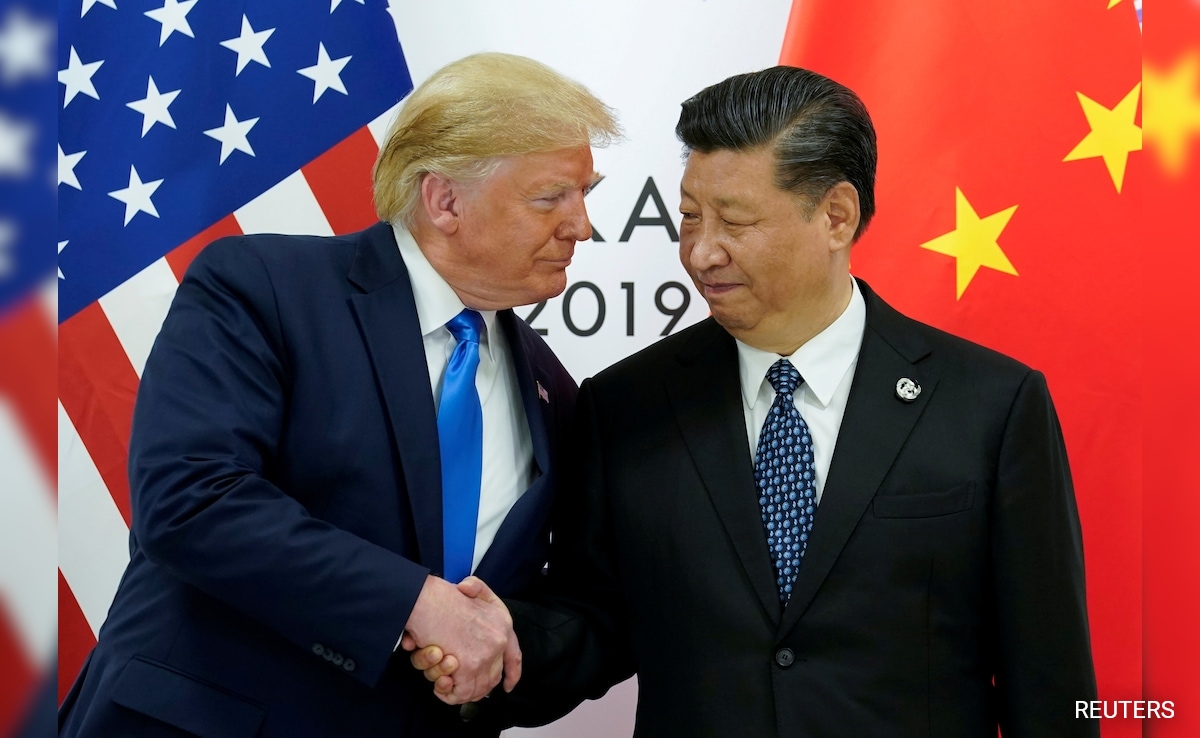Trade Tensions Cool as Two Economic Giants Find Common Ground
In a significant development for global trade, the United States and China have announced a temporary agreement to reduce tariffs on each other’s imports, a move intended to alleviate escalating trade tensions between the two world powers. This agreement comes as both nations strive to find common ground amidst a backdrop of economic strain and diplomatic discord. The landmark announcement was made in Geneva earlier this week, marking an important stride towards potentially resolving prolonged trade disputes.
This historic agreement will see the combined tariff rate imposed by the U.S. on Chinese products—currently sitting at a staggering 145%—dropped significantly to just 30% by May 14. In parallel, the burdensome 125% Chinese tariffs on U.S. goods will be slashed to 10%. This decision is anticipated to rejuvenate trade between the two largest economies in the world, providing breathing room for businesses and consumers who have felt the bite of increased costs and limited accessibility to goods.
The agreement is not just a financial maneuver; it holds profound implications for the larger context of U.S.-China relations. Treasury Secretary Scott Bessent highlighted the constructive nature of the discussions, stating, “We had a very robust and productive discussion on steps forward regarding fentanyl.” This indicates that the negotiations extended beyond trade tariffs, touching upon critical public health issues that require international cooperation. Furthermore, details reveal that both countries are committed to establishing a mechanism for ongoing dialogue about economic and trade relations, signaling a willingness to maintain communication and potentially avoid future escalations.
Understanding the Impact of the Tariff Reduction
The reduction in tariffs is expected to have far-reaching effects on both nations’ economies. U.S. Trade Representative Jamieson Greer underscored the U.S. administration’s objective of achieving a more equitable trade relationship with China. This sentiment underscores a shift in strategy, moving away from a stubborn “America First” mindset to one that acknowledges interdependence in global trade dynamics.
Despite the optimism surrounding the announcement, uncertainties linger. The White House initially referred to this agreement as a “trade deal”, but clarity regarding the desired outcomes and the timeline for achieving them remains vague. Previous demands from China for the complete removal of tariffs showcased a significant divergence between the two nations’ priorities—specifically, China’s goals versus the U.S. aim to mitigate its trade deficit.
While markets reacted positively to the announcement, with analysts noting a momentary respite from trade-related anxiety, historical precedents caution against excessive optimism. In 2018, similar negotiations culminated in a temporary respite that was soon undermined by the imposition of additional tariffs. This historical context raises questions about the viability of the current agreement and whether it will ultimately yield a sustainable resolution to the trade war that has persisted for years.
As per the report by Forbes, economic analysts are closely monitoring the ongoing discussions to gauge how they might affect the flow of trade between the U.S. and China. The reality is that, while dramatic shifts in tariff rates can provide short-term relief, the complexities of international trade require robust, long-lasting solutions.
Challenges Ahead: The Road to Recovery
With the trade agreement on the table, businesses on both sides of the Pacific are hopeful for a revival in cross-border trade and investment. The initial tremors of the trade war have created an environment of uncertainty, leading to fluctuations in stock markets and price points for consumers. However, experts suggest that the road to economic recovery will not be without its challenges.
The pandemic has only exacerbated the existing trade imbalance, with many companies grappling with supply chain disruptions. Furthermore, the economic recovery from the pandemic varies widely between both nations, adding another layer of complexity to the negotiations. Should both sides fail to meet agreed milestones, the path towards a balanced trade relationship may become even more convoluted.
Additionally, the shadow of geopolitical tensions continues to loom over these economic discussions. Several analysts note that the U.S.-China relationship is heavily influenced by other factors such as regional security issues in the Asia-Pacific and broader international diplomatic relations. Hence, while trade tariffs can be reduced, the underlying tensions might still hinder long-term cooperation.
As markets and economies globally respond to the developments, it remains crucial for both nations to adhere to the terms of the agreement. For U.S. businesses, particularly those reliant on Chinese goods and markets, this could represent an opportunity to overcome recent setbacks while paving the way for further negotiations on contentious issues pertaining to intellectual property and trade practices.
The Future of U.S.-China Trade Relations
Ultimately, the recent tariff reduction agreement is more than just a financial arrangement; it is a beacon of hope for businesses and economies impacted by the prolonged trade war. While it offers immediate relief, the success of this agreement will depend heavily on sustained dialogue and goodwill from both sides. The world will be watching closely to see if this announcement is merely a temporary fix or if it signifies a genuine commitment to rebuilding U.S.-China trade relations on a foundation of mutual respect and understanding.
For further insights into the evolving landscape of U.S.-China relations and their implications for global trade, check out related articles on MarketWatch and Reuters. The outcome of this agreement may shape international economic relations for years to come, and its impact will resonate well beyond the borders of the U.S. and China.
DISCLAIMER
We have taken every measure to ensure that the information in this article and on our social media platforms is accurate, verified, and obtained from reliable sources. For feedback or complaints, please contact us at info@hamslive.com.


